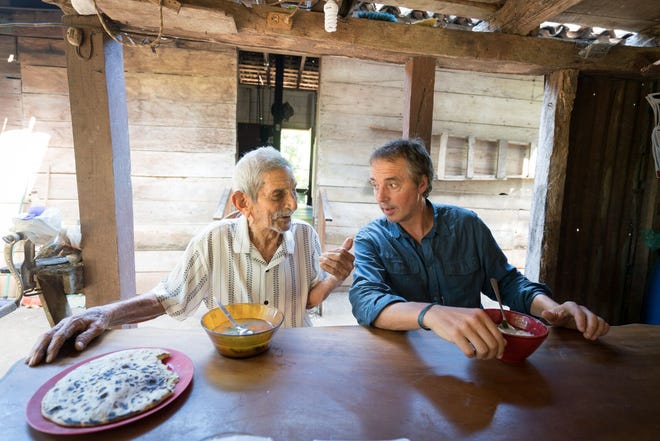What is the Blue zones diet − and is this the secret to living a long time?
The mysterious diet is the subject of a new Netflix documentary series “Live to 100: Secrets of the Blue Zones,” which was ranked among streamers’ Top 10 shows after its release last week. In the series, National Geographic Fellow and bestselling author Dan Buettner examines five regions around the world where people have the highest incomes. life expectancy and seeks to learn from them how to live longer and healthier lives.
Buettner’s travels inspired him to start the Blue Zones diet, modeled after the eating habits of these people.
“If you want to know what 100-year-old kids ate to live to be 100… you have to know what they did most of their lives,” Buettner told USA TODAY.

Where are the blue zones located?
Over the course of about eight years, Buettner and a team of colleagues conducted research and discovered five regions around the world with exceptional longevity. These blue zones are Okinawa, Japan; Sardinia, Italy; Nicoya, Costa Rica; Icaria, Greece and Loma Linda, California.
What is the Blue Zones diet?How to eat like the longest-living people.
What foods do you eat on the Blue Zones diet?
Through an analysis of the eating habits of these communities, Buettner and his team discovered that residents of these blue zones ate a primarily whole foods and a plant-based diet. The main pillars are:
- Whole grains, such as corn, wheat and rice
- Green vegetables
- Tubers love sweet potatoes
- And beans, which Buettner described as “the cornerstone of the diet.”
People in blue zones also eat meat, on average five times a month, and fish once or twice a week. They also contain “a little sheep’s or goat’s milk cheese, but very little sugar. Probably a quarter of the sugar we eat, and almost no processed foods.”
What foods do you avoid on the Blue Zones diet?
This also means no processed meats, which the World Health Organization has been classified as carcinogenic. The WHO defines processed meats as those that are “transformed by salting, curing, fermentation, smoking or other processes to enhance flavor or improve preservation.” Examples include hot dogs, sausages, corned beef, and beef jerky.
Although the Blue Zones diet may include less meat and dairy than most Americans are used to, Buettner said he wouldn’t call it restrictive. Instead, he calls it “putting a plant-based accent” on your diet. When he officially formulated the regime and created a Blue Zones Cookbookhe decided to exclude meat and dairy completely, explaining that “the more people can eat a whole food, plant-based diet, the better off they will be.”

What is the difference between the Blue Zones diet and the Mediterranean diet?
Although this diet has similarities with the Mediterranean dietranked No. 1 on U.S. News & World Report’s list of Best Diets for 2023, it draws on communities beyond this region and places less emphasis on seafood. Additionally, The Blue Zones diet aims to go beyond diet by also focusing on a lifestyle that encourages social connection and movement.
More:US life expectancy problem ‘bigger than we thought,’ report says
What are the benefits of the Blue Zones diet?
In addition to the hope of living a long life, Buettner said the diet can also help with other health problems.
In a 10-week challenge broadcast on the show “Today” in 2019, people who followed the diet achieved impressive results. One woman reported losing 12 pounds and reducing her cholesterol levels by 22 points. Another lost 17 pounds and said she felt “happy (and) full of energy,” while a third lost 37 pounds.
“While the women we spoke to saw the most dramatic change, everyone who followed the program for three months also reported weight loss,” the presenter said. Maria Shriver said in the segment. “But I think what’s most exciting to me is that they all reported an improvement in their emotional well-being.”
What is the DASH diet?Everything you need to know.
Not consuming meat or reducing meat consumption can also help reduce cholesterol levels and the risk of cardiovascular disease, according to the report. American Heart Association.
The diet can also help you feel fuller for longer. A 2016 study Comparing meals containing plant protein sources to animal proteins, it was found that satiety was higher after eating legumes such as beans and peas than after eating meat.
“These fiber-rich sources are known to improve satiety, which can help manage our weight,” Ashley Baumohl, associate clinical nutrition manager at Lenox Hill Hospital in New York, previously told USA TODAY.
Plant-based diets can also help support bowel regularity, and an increase in fiber is “directly associated with reducing the risk of colon and breast cancer,” she said.
“So there are many benefits to choosing these foods as your primary source of nutrition.”
Contributor: Sara M. Moniuszko
What is the GOLO diet?Experts explain why it’s not for everyone.


